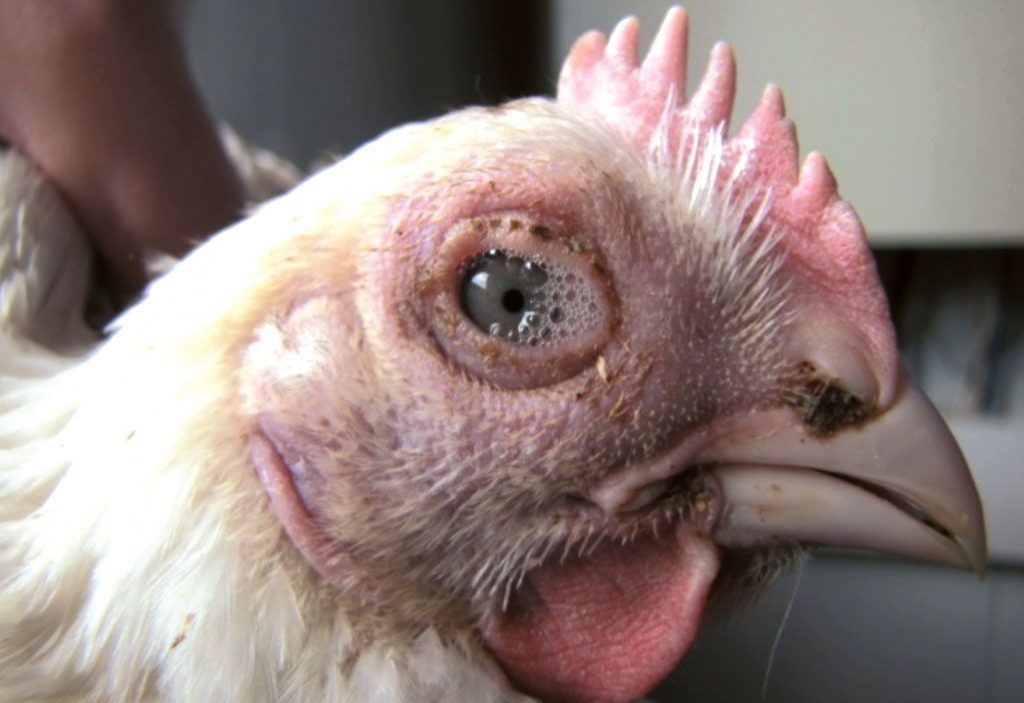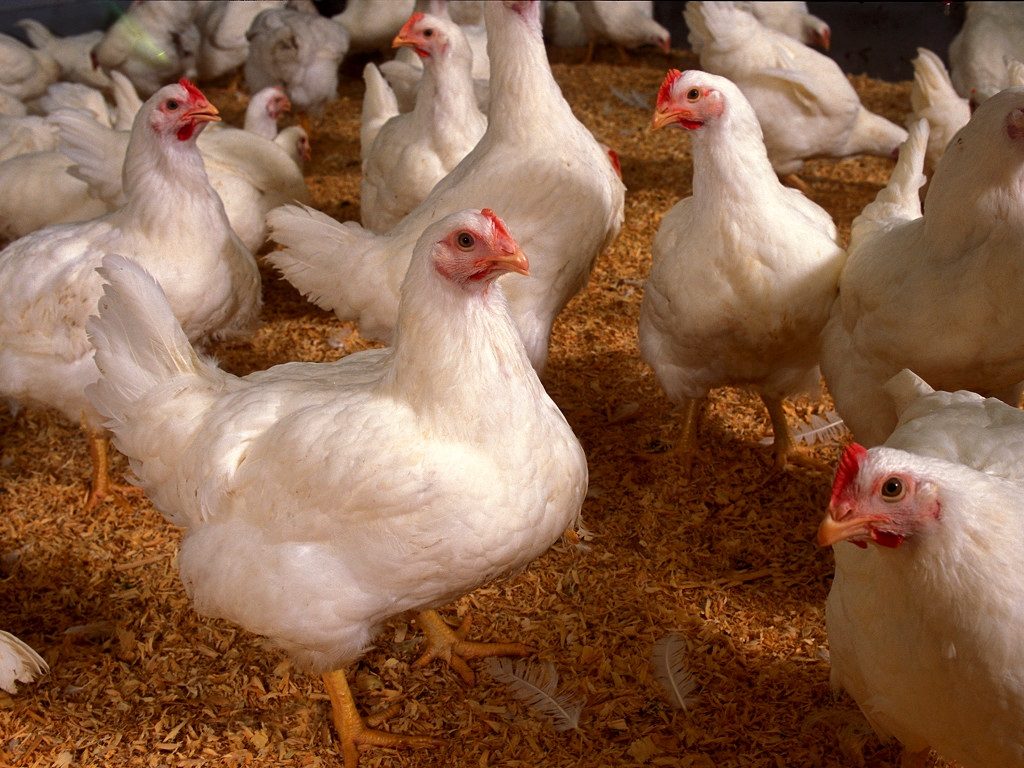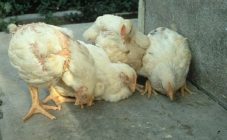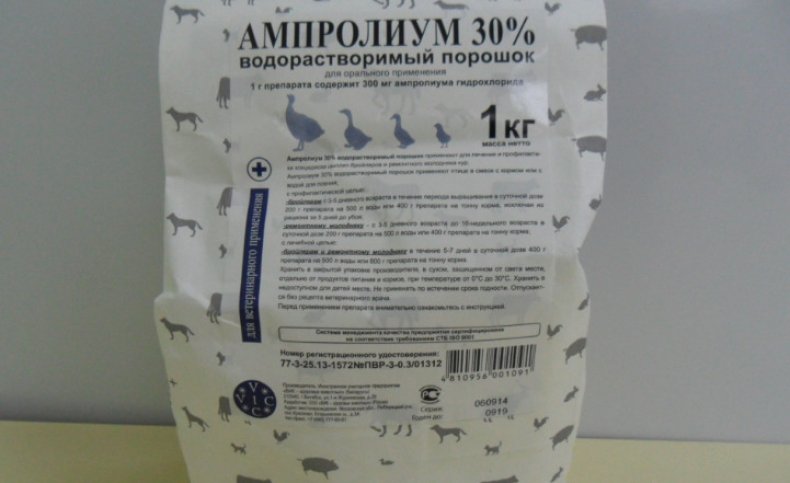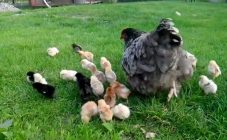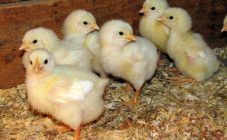Content:
Salmonellosis is one of the serious intestinal diseases, therefore, it is reported in the media, and is constantly monitored by the sanitary and epidemiological services, veterinarians, doctors and customs officials. How this disease manifests itself in chickens, how to treat them and what preventive measures should be taken to prevent the development of the disease among the poultry population - all this will be written about below.
What is Salmonella
Salmonella is a rod-shaped gram-negative bacterium from the genus Salmonella, the Enterobacteriaceae family. This pathological microorganism is extremely resistant to environmental influences: it can live in water for up to six months, and in soil - up to 1.5 years. The infection not only persists for a long time, but is also capable of reproduction.
Most often, it enters the human body through contaminated meat or milk. The reasons are the usual oversight, non-observance of food storage conditions, poor-quality processing. At the same time, the taste and appearance of milk or meat can remain without visible changes. Microbes are not destroyed by smoking, salting or freezing food.
The disease can be transmitted:
- from a sick person, a carrier of infection;
- from poultry or animals;
- through products (milk, chicken eggs).
Bacilli can be transmitted through direct contact with a sick person, through household items, food, contaminated drink. Also, the infection can "hide" in the meat of domestic animals or birds, as well as in their eggs.
The most common source of Salmonella disease is eggs from chickens and other poultry. And the main danger is that often this disease in poultry passes almost without characteristic symptoms, which is fraught with the active spread of salmonellosis - microbes get on the eggshell, remain in the meat during slaughter, and if stored and processed incorrectly, they cause severe intestinal poisoning.
Salmonellosis in chickens, broilers, chickens: symptoms and signs
Salmonellosis in chickens most often occurs after eating contaminated feed or comes with water from drinkers. But even if Salmonella enters the chicken organism, the individual does not necessarily get sick, it can be a carrier of bacteria. It depends on the type of bacteria, the conditions in which the poultry is kept, the age and immunity of the chickens.
The main reasons for the development of the disease:
- overheating or severe hypothermia of the offspring;
- unsanitary conditions in the poultry house;
- too many livestock in a small room;
- the water in the drinkers rarely changes;
- reservoirs littered.
In incubators, newborn chicks are infected if the rules for disinfecting equipment before laying eggs are not followed. As a result, germs are transmitted to newborn chicks through the respiratory system.
The most serious consequences occur in large poultry farms, where Salmonella get along with poor-quality mixed feed or with contaminated hatching eggs. As a result, an outbreak of the disease occurs, the consequences of which are eliminated over a long period - up to a year.Measures are being taken to disinfect premises and equipment, the herd of chickens is completely replaced, and only then can we talk about the destruction of this disease.
Salmonellosis in chickens - symptoms and treatment
Chickens are at risk from the moment they are born and up to 14 days of age. Diseases should be treated immediately, when the first signs of the disease appear.
Symptoms of salmonellosis in chickens:
- depressed state;
- drowsiness;
- muscle weakness;
- tears flow from the eyes;
- discharge appears from the nasal passages;
- breathing is difficult, wheezing can be heard.
This infection most commonly affects the chicks' respiratory tract and lungs.
In older chicks (from 14 days to 30), in addition to breathing disorders, diarrhea and goiter atony appear. Chickens die in a week and a half after the moment of illness, while they may experience convulsions, with throwing their heads back - this is a consequence of intoxication of the body. The mortality rate among chicks from this disease can reach 30%. Recovered individuals noticeably lag behind in development from other birds, remain carriers of infection and can be a source of infection for other inhabitants of the chicken coop.
In older young animals and adults, the disease is chronic, and often latent, without the manifestation of the main symptoms. The main problem with salmonellosis in chickens is the absence of symptoms. As a result, birds die from an inflammatory process in the cloaca, or due to massive asymptomatic yolk peritonitis. Since the chicken does not have signs of salmonellosis, treatment is not carried out, as a result, sick individuals simply die.
If the disease does manifest itself, then it looks like this:
- swelling of the joints, wings and limbs;
- coordination of movements is impaired;
- legs tremble, birds may limp;
- birds begin to drink a lot;
- diarrhea occurs;
- egg production decreases sharply;
- visual acuity decreases;
- plumage may fall out in some places.
Symptoms and treatment of salmonellosis in broilers are no different, so it makes no sense to describe them separately.
How to treat salmonellosis
It is believed that this disease most often occurs in domestic chickens. Probably due to their indiscriminate diet. However, there is an alternative opinion. Some veterinarians believe that salmonella and chicken are symbiotic.
Treatment of salmonellosis in chickens and adults is challenging as the salmonella bacteria quickly adapt to antibiotics. Therefore, if this bacterium is detected in chicks that slow down growth, lag behind in development from the rest of the young, then they are slaughtered and immediately destroyed. And the rest of the livestock begins to be treated with antibacterial drugs. It is advisable to treat chickens only at an early stage of salmonellosis. And adult chickens should not be treated, they are slaughtered and destroyed.
The main therapy for a conventionally healthy herd is the addition of antibiotics to food and water, less often in the form of injections. However, the treatment of salmonellosis is effective only at the onset of the disease, or during the incubation period. The dosage of medicines depends on the age category, body weight and breed.
The following drugs have shown effectiveness in the fight against salmonellosis:
- Levomycin, which is based on enrofloxacin. It is mixed into feed or water for chickens three times a day (at the rate of 60 g for every 2 kg of live weight). The course of treatment is at least a week.
- Baytril. The product is added to drinking water (0.5 liters for each liter of liquid). Water is not poured into drinkers without medication during treatment. The course of treatment with this drug is at least 5 days.
- Gentamicin sulfate is added to the drinking liquid (the norm is 5 mg per bucket of water). Chickens are given this medicinal solution for no more than a week.
- Furazolidone. A medicinal solution is prepared as follows: 1 tablet is diluted in 3 liters of water, this solution is given to the bird for 3 weeks.In parallel, streptomycin is added to the feed (for each kg of food - 1,000 units).
For normal bowel function, bifidumbacterin, calitbacterin and other similar drugs should be given to the bird in parallel with antibiotics.
Disease prevention
The main thing in the prevention of salmonellosis in chickens is the use of live and killed vaccines. This is especially true in farms where this disease occurs regularly among poultry. Therefore, experts recommend for prophylactic purposes to give chickens the Enteritidis phagotype 4 vaccine. This live vaccine can be given to broiler chickens, a herd of any breed of adult chickens, as well as laying hens in poultry farms.
There are other generic vaccines that can be given to all types of poultry (including waterfowl):
- the associated drug against salmonellosis "Avivak Salmovac", which is used prophylactically against salmonellosis, colibacillosis and pasteurelase in poultry;
- killed vaccines "Salmabik" and "Salmabik Plus", manufactured in Israel.
When hatching chicks in incubators, it is recommended to spray bacteriophages against salmonellosis in cabinets in which eggs are laid for preventive purposes. The same drugs are given to chickens in the first week of their life.
To identify carriers of Salmonella, all individuals from the parent flock are tested by the KRNGA method. Those birds that test positive are separated and treated with antibiotics. The course of treatment is carried out until the results are negative.
Salmonellosis in domestic chickens is a very serious disease that threatens not only the livestock, but also the owners of the chicken coop. Every farmer needs to be well aware of the symptoms of the disease, and regularly examine the birds for infection. If you suspect salmonellosis, you must take action.
